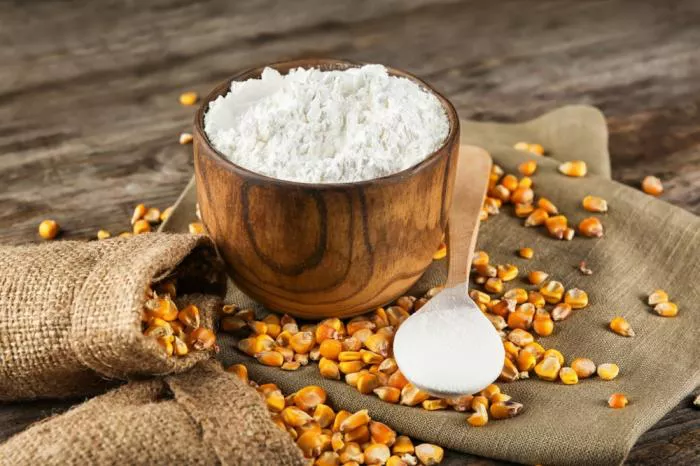Diaper rash is a common issue for infants. It can cause discomfort and distress for both the baby and the parents. Many parents look for quick solutions to soothe their baby’s skin. One popular remedy is cornstarch. This article explores the use of cornstarch for diaper rash, its benefits, and considerations for safe use.
Understanding Diaper Rash
Diaper rash occurs when a baby’s skin becomes irritated. This irritation can be due to several factors. These include prolonged exposure to wet or dirty diapers, chafing from the diaper, and even allergic reactions to products. Recognizing the signs of diaper rash is essential. Common symptoms include redness, swelling, and discomfort in the diaper area.
The severity of diaper rash can vary. Mild cases may only show slight redness. More severe cases can lead to open sores and peeling skin. Parents should monitor their baby’s skin closely. If the rash does not improve, it may be time to consult a pediatrician.
What Is Cornstarch?
Cornstarch is a fine, powdery substance made from corn. It is often used in cooking and baking as a thickening agent. However, it has also gained popularity as a home remedy for various skin conditions. Cornstarch can absorb moisture and reduce friction. These properties make it appealing for treating diaper rash.
When using cornstarch, it’s essential to consider its texture. The fine powder can create a soft barrier on the skin. This barrier may help protect against further irritation. Many parents wonder if cornstarch is a safe and effective option for diaper rash.
Benefits of Using Cornstarch for Diaper Rash
Moisture Absorption: One of the primary benefits of cornstarch is its ability to absorb moisture. Keeping the diaper area dry is crucial for preventing and treating diaper rash. Cornstarch can help reduce dampness and maintain a drier environment.
Friction Reduction: Diapers can cause chafing against a baby’s delicate skin. Cornstarch can act as a lubricant, reducing friction. This property may help prevent further irritation during diaper changes.
Natural Ingredients: For parents looking for natural remedies, cornstarch is an appealing option. It is free from harsh chemicals and fragrances. This can be especially important for babies with sensitive skin.
Easy to Apply: Cornstarch is simple to apply. Parents can sprinkle a small amount onto the affected area during diaper changes. It is generally easy to find in grocery stores, making it accessible.
How to Use Cornstarch for Diaper Rash
Using cornstarch for diaper rash is straightforward. Here are some steps to follow:
Clean the Area: Before applying cornstarch, gently clean the diaper area. Use warm water and a mild soap to remove any residue. Pat the skin dry with a soft cloth.
Apply Cornstarch: After the area is dry, sprinkle a small amount of cornstarch onto the skin. Ensure that the powder covers the entire affected area. Avoid using too much, as a thin layer is often sufficient.
Reapply as Needed: During diaper changes, check the diaper area. If it appears moist or irritated, reapply cornstarch as needed. Regular application can help maintain dryness.
Monitor for Improvement: Keep an eye on the diaper rash. If it starts to improve, continue using cornstarch. If there is no improvement within a few days, consult a pediatrician.
Precautions When Using Cornstarch
While cornstarch can be helpful, there are some precautions to consider:
Avoiding Open Wounds: Do not apply cornstarch to broken or open skin. If the diaper rash is severe and has led to sores, cornstarch may not be appropriate. In such cases, a pediatrician should be consulted.
Watch for Allergies: Although rare, some babies may have allergies to cornstarch. If you notice any unusual reactions, such as increased redness or swelling, stop using it immediately.
Keep the Area Dry: While cornstarch can help absorb moisture, it is still essential to keep the diaper area as dry as possible. Regularly change diapers and use moisture-wicking fabrics.
Consult a Pediatrician: If the rash persists or worsens, always seek medical advice. A pediatrician can provide guidance on the best treatment options.
Alternatives to Cornstarch
If cornstarch does not provide relief, there are other options to consider:
Zinc Oxide Ointments: Many diaper rash creams contain zinc oxide. This ingredient forms a protective barrier on the skin. It helps keep moisture away and promotes healing.
Petroleum Jelly: A thin layer of petroleum jelly can also help create a barrier. It is safe for babies and can be used in conjunction with other treatments.
Coconut Oil: This natural oil has antibacterial and moisturizing properties. Applying coconut oil can soothe irritated skin and provide relief.
Oatmeal Baths: For severe cases, an oatmeal bath can help soothe irritated skin. Ground oatmeal added to bathwater can provide relief from itching and inflammation.
Conclusion
Cornstarch can be a helpful option for treating diaper rash in infants. Its moisture-absorbing and friction-reducing properties make it an appealing choice for many parents. However, it’s essential to use it correctly and monitor for any adverse reactions. If the rash does not improve or worsens, seeking medical advice is crucial.
As with any remedy, every baby is different. What works for one child may not work for another. It is vital for parents to explore various options and find what best suits their child’s needs. By being informed and proactive, parents can effectively manage diaper rash and keep their babies comfortable.
Related topics:


